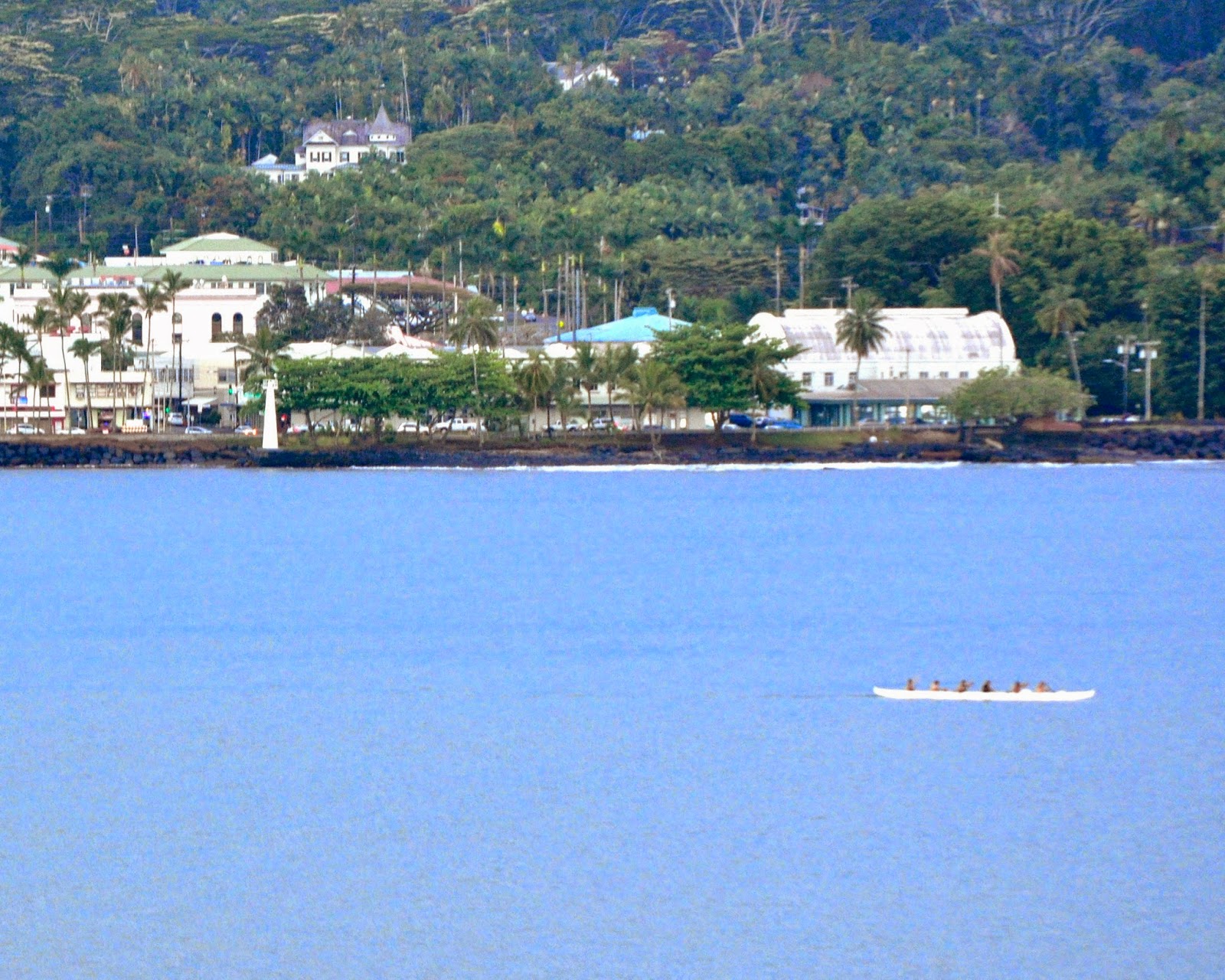In 1825, British sailors ascended the crater and found hard, clear calcite crystals among the black rocks. Mistaking them for diamonds, the sailors named the crater Diamond Head. Once of the Hawaiian names for Diamond Head is "leahi", meaning "wreath of fire". The name reflects the ancient Hawaiian practice of lighting a fire on the crest of the volcano to guide canoe fleets back to the island.
The first lighthouse on this site was built in 1899. It was rebuilt in 1917 when cracks developed in the earlier structure. The Diamond Head Lighthouse still uses the original Fresnell Lens. The flash of a modern 1000-watt electric bulb is focused by the lens so it can be seen more than 18 miles out to sea.
Located at the eastern end of Waikiki Beach, the Diamond Head Crater is a familiar landmark to the throngs of tourists who today pack the high-rise hotels in the area. For mariners of yesteryear, Diamond Head also served as a landmark for their approach to the harbor at Honolulu from the west coast of the United States.
In the 1820s, sailors discovered what they believed were diamonds in the rocks on the volcano's slopes. Although the sailor's diamonds turned out to be clear calcite crystals, the name Diamond Head has been associated with the crater ever since.
With the increase of commerce calling at the port of Honolulu, a lookout was established in 1878 on the seaward slopes of Diamond Head for spotting and reporting incoming vessels.
During the night of October 2, 1893 the SS Miowera grounded on the reef just off Diamond Head. As Diamond Head was obscured that evening, the vessel's captain had mistaken the high land to the north of the crater as Diamond Head and had brought his ship too close to shore. All passengers and cargo were safely off-loaded, but it took six weeks to free the Miowera. Four years later, the magnificent steamship China also ran aground. It was widely believed that both of these incidents could have been avoided had a light been shown from Diamond Head.
Captain James King, minister of the Interior for the Republic of Hawai`i, had been petitioning the Hawaiian legislature for a light on Diamond Head for several years, and according to the following account from the December 4, 1897 edition of the Pacific Commercial Advertiser steps were finally being taken to rectify the situation.
Captain King became weary of hearing the pros and cons of the case, and after a few trips to the vicinity with Mr. Rowell, the Superintendent of Public Works, drove a stake for the site of the beacon. ... There was ordered at once the material for the illumination and for the towers. The iron for the structure has arrived and as soon as some road is made to the slope point, work on the structure will begin.
When the Lighthouse Board took control of all aids to navigation in the Hawaiian Islands in 1904, it reported that the Diamond Head Lighthouse was the only first-class lighthouse in the territory. However, during an inspection in 1916, it was noted that growing cracks in the structure were compromising the tower's integrity. In 1917, funds were allocated for constructing a fifty-five-foot tower of reinforced concrete on the original foundation.
Scaffolding was built around the old tower and the original lantern room was removed and placed atop a new metal framework, allowing the continuous operation of the light. The old tower was then dismantled and replaced with the modern concrete structure, which strongly resembles the original tower. One notable difference is that the old tower had an external staircase that wrapped partway around the tower, whereas the new tower houses an internal, cast-iron, spiral stairway. When the tower was complete, the lantern room containing the Fresnel lens was placed atop the new lighthouse.
The first keeper's dwelling at the station was built several yards west of the tower in 1921, three years after the new lighthouse was activated. Before that time, the keepers typically lived in a nearby village. A keeper occupied the dwelling for just three years, as the station was automated in 1924.
During World War II, a Coast Guard radio station was housed in the keeper's dwelling, and a small structure was built on the seaward side of the tower. Following the war, the dwelling was remodeled and has since been home to the Commanders of the Fourteenth Coast Guard District.
Besides continuing its nightly vigil over the reefs at Diamond Head, the lighthouse also serves as one end of the finish line for the biennial Transpac Yacht Race, which starts 2,225 miles away in Long Beach, California. During the race, members of the Transpacific Yacht Club are allowed to use the tower as a lookout for recording finishing times. The road near the lighthouse is packed with people watching the beautiful yachts, under full sail, riding the trade winds towards Honolulu. Even when there isn't a race to watch, the pullouts near the lighthouse offer amazing views of the surf and those who are drawn to ride it.


















